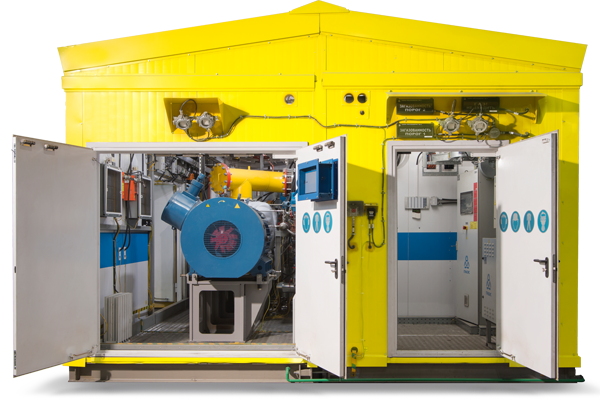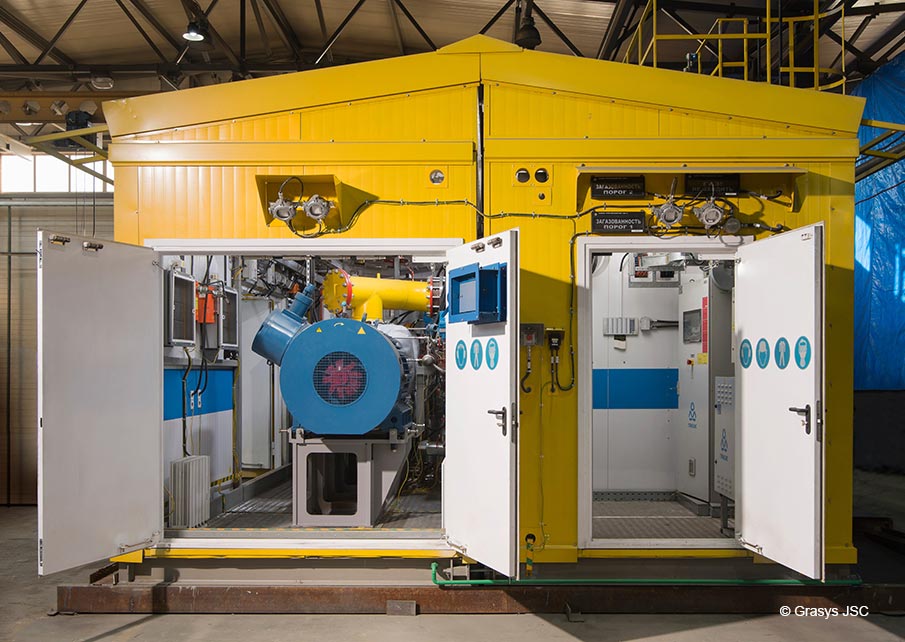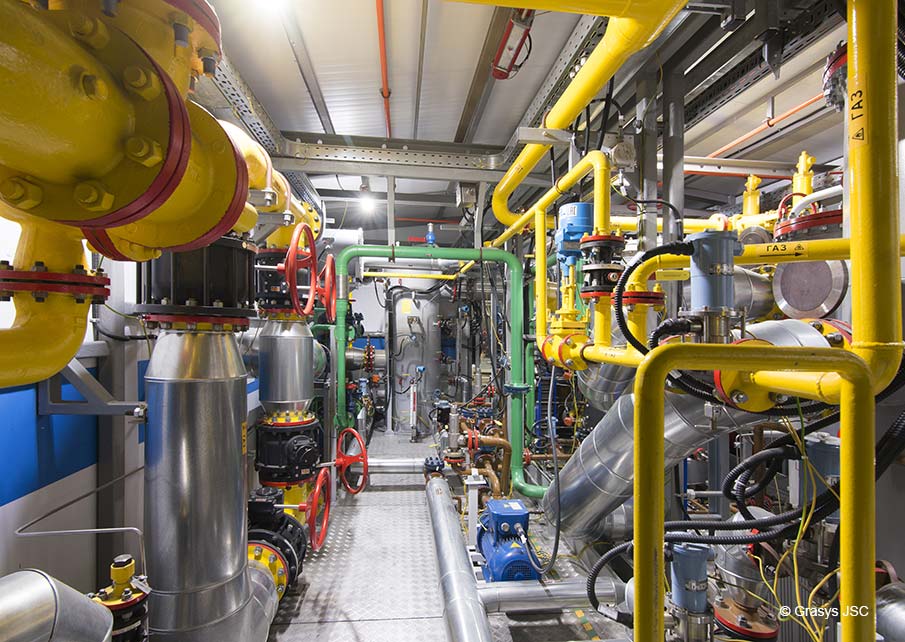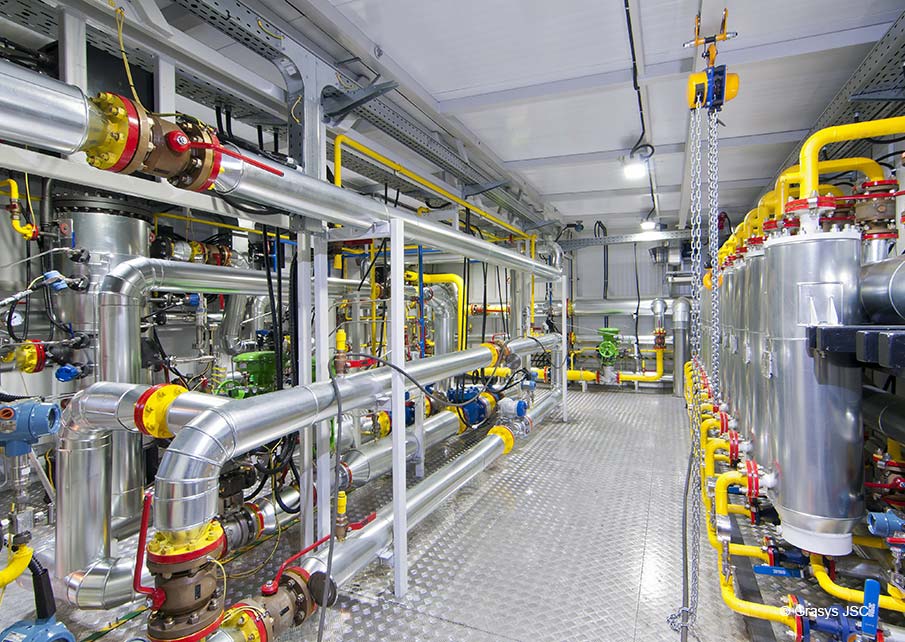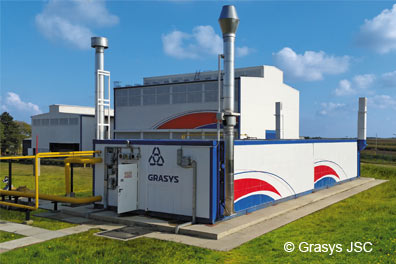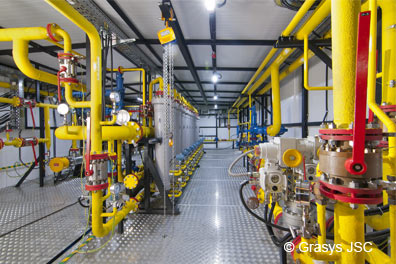Mineral Gas Combustion Heat as a Function of Methane Concentration
| Methane concentration in mine gas (%) | 30 | 40 | 50 | 60 | 70 | 80 | 90 |
| Combustion heat (MJ/kg) | 10.5 | 14.3 | 17.8 | 21.3 | 24.7 | 28.5 | 32.1 |
In most cases, the concentration of methane in mine gas is up to 35–40% vol. To be used as fuel gas, mine gas must have a lower calorific value of at least 16.0 MJ/m³, which corresponds to a CH4 content of 46% vol.
A similar situation (inability to use the gas directly as fuel gas due to its extremely low calorific value) arises for associated petroleum gas with a high nitrogen content (in some cases up to 90% vol.).
Grasys membrane units can treat mine gas as well as associated petroleum gas with high nitrogen content for use as fuel for GTPPs, GRPPs and boiler houses.
